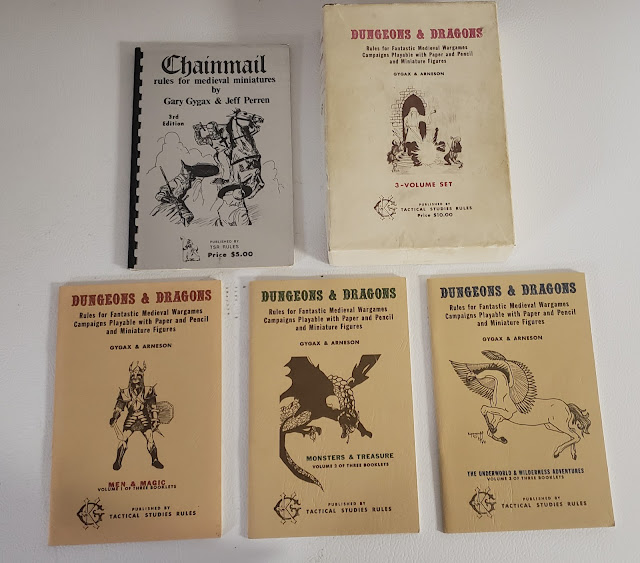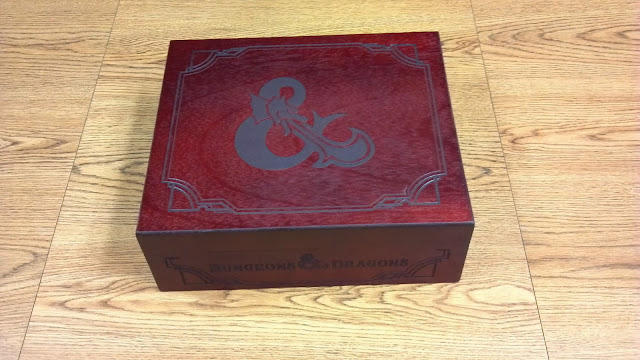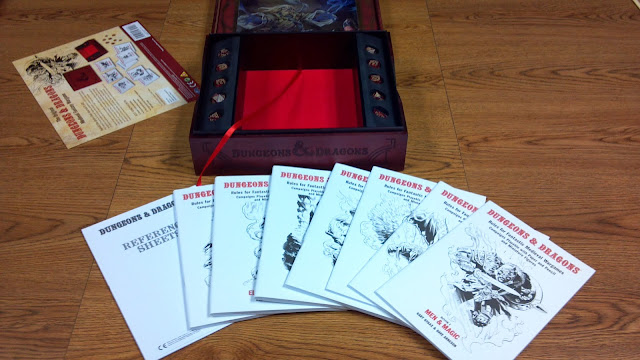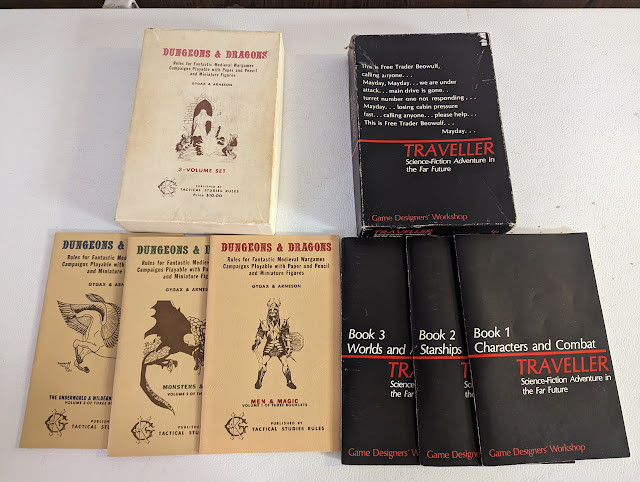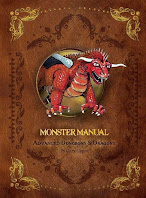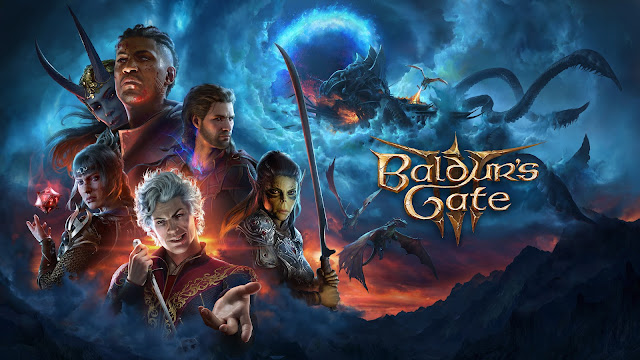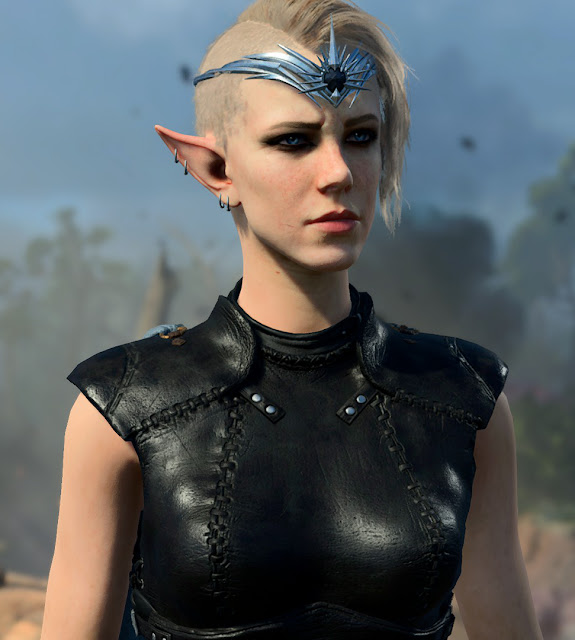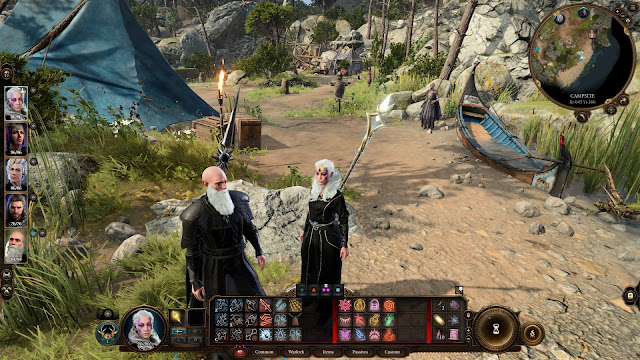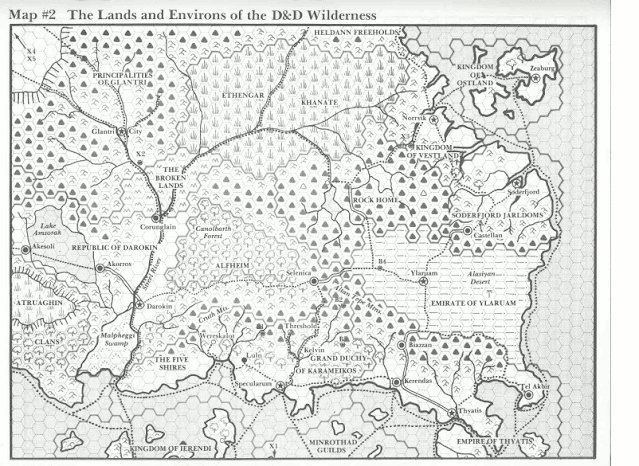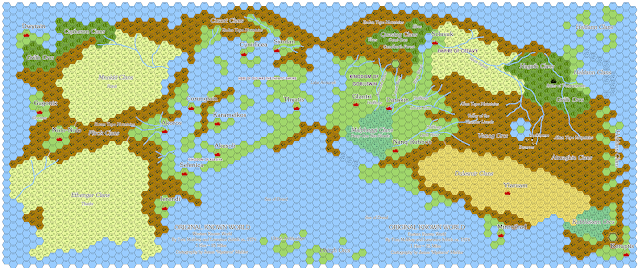A bit of a divergence today for, well, a bit of divergence. Let me set the stage a bit. It is 2007, and Wizards of the Coast has decided to end the publication of the wildly successful Dungeons & Dragons 3rd Edition line and will now produce Dungeons & Dragons 4th edition. D&D 3e was the edition that brought many back to the game. It was the edition that rekindled my enjoyment of the game after so many years. The idea that this would end only after 7 years (10 years per edition had been the average) seemed a bit odd.
In any case, 4th edition was released, and ... well, I'll talk about that on Sunday. But people were not ready to give up their 3rd Edition rules. Enter Paizo and Pathfinder!
Back when 3rd Edition was popular, Wizards of the Coast had licensed out the RPG Hobby's flagship gaming Magazines, Dragon and Dungeon, to Paizo, Inc. Here they helmed both magazines for many years and built a few 3rd Edition compatible products thanks to the Open Gaming Licence. In 2007 Wizards of the Coast announced 4th edition they did not renew the contract with Paizo to produce material. So Paizo went on to produce their own Pathfinder periodical, a set of publications similar to the Dungeon magazine.
In 2008 D&D 4e started out with good sales, but soon they began to fall. Fall faster than expected. Paizo saw there was still a market for 3rd-edition compatible material, but they also wanted to make some changes. Thus, in 2009 the Pathfinder RPG rules were born.
So in 2009, we both did D&D 4e, which was not compatible with D&D 3x or any other D&D rules set. And Pathfinder, which was 95% compatible with D&D 3.x. That last 5% is for the differences in the D&D 3 and 3.5 rules and the extras Pathfinder added in. But honestly, you could take your D&D 3.0 characters, fight D&D 3.5 monsters while the Game Master ran Pathfinder rules, and everyone would be fine.
Sadly, Wizards of the Coast/Hasbro has a very bad habit of firing people. The good news here though is that some of those people would go on to be hired by Paizo to work on Pathfinder. I mentioned before that Pathfinder is often thought of as being "Dungeons & Dragons 3.75" and there is a lot of truth to that. There is a lot here that feels like D&D 3.x perfected. They certainly had the advantage of 9 more years of playing and writing to help them out.
Pathfinder then did the impossible, it dethroned D&D as the best selling Fantasy RPG. They beat D&D at their own game. If the OGL was one of the reasons 4e got made, it was 4e's failures that got 5e made. In the meantime, Pathfinder just kept moving along and doing its thing.
Pathfinder 2nd Edition came along in 2019. It was different. While the rules were still very much tied to the OGL and the system first created for D&D 3, these rules had more divergence. The Pathfinder 2nd Edition rules were created to go after the D&D 5th edition, which by this time had reclaimed its market superiority.
This would change again in 2023 when Wizards announced they were going to "revoke" the OGL (something they actually could not do legally). Pathfinder relied on the safe harbor of the OGL (as do many publishers) so in April of 2023 they announced their Pathfinder 2e Remastered. This would be their 2e ruleset, rewritten to avoid using the OGL and instead their own ORC license. While this did not deal the blow to D&D 5e that Pathfinder did to 4e, it was enough to have some people (myself included) move from D&D 5e to Pathfinder 2eR.
 |
| Pathfinder 2e and 2eR. I am still a sucker for a ribbon in my book. |
I can find no significant differences between the Pathfinder 2e rules and the Pathfinder 2eR ones. I know Paizo is no longer selling the 2e rules in favor of the 2eR, which is as it should be. Pathfinder 2e is a fine game in its own right, and I like it better as long as I am not trying to compare it to either D&D 3e or 5e. And then only because they can all do the same sorts of games, just in different ways.
Tomorrow is Q Day, and I am going with a tried and true one. I will talk about the various Queens of Dungeons & Dragons.



